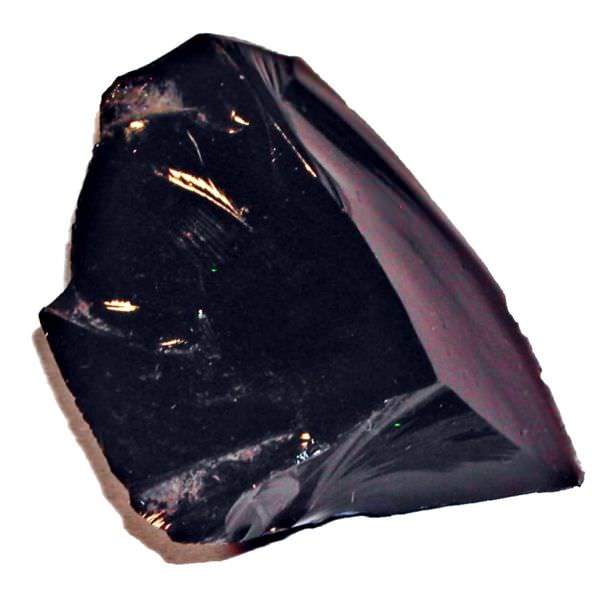[/caption]
Did you know that volcanoes can make glass? Well, it’s not exactly the kind of glass you’d want to put in your house. It’s called obsidian, and it’s a naturally occurring volcanic glass formed when felsic lava flows from a volcano and then cools without crystal growth.
In a regular eruption, lava pours out of a volcano out onto the surface travels a distance downhill, and then hardens. Although a lava flow might have a thin solid crust, it might take months or even years to fully cool. As it cools, crystals form in the rock. These crystals are larger in the core of the rock, which has taken longer to cool.
In order to get obsidian, the lava erupting from a volcano needs to cool so fast that crystals in the rock don’t have a chance to form. You’ll often get obsidian when lava from a volcano is pouring into a lake or ocean and cools quickly. And glass, unlike crystals, has no regular structure and can therefore fracture in long curved shapes. Obsidian consists mostly of silicon dioxide (70% or more) – that’s the same as window glass. The black color comes from minerals dispersed in the glass, like magnetite or hematite.
If you could hold a piece of obsidian in your hand, it’s usually black or dark grey and very shiny and glasslike. It’s often cracked and broken with sharp edges. You can see than ancient people had many uses for obsidian, since it can hold a very sharp edge. In fact, surgeons to this day have found that obsidian can hold a sharper edge than even the hardest surgical steel.
We have written many articles about lava for Universe Today. Here’s an article about different types of lava, and here’s an article about the temperature of lava.
Want more resources on the Earth? Here’s a link to NASA’s Human Spaceflight page, and here’s NASA’s Visible Earth.
We have also recorded an episode of Astronomy Cast about Earth, as part of our tour through the Solar System – Episode 51: Earth.

